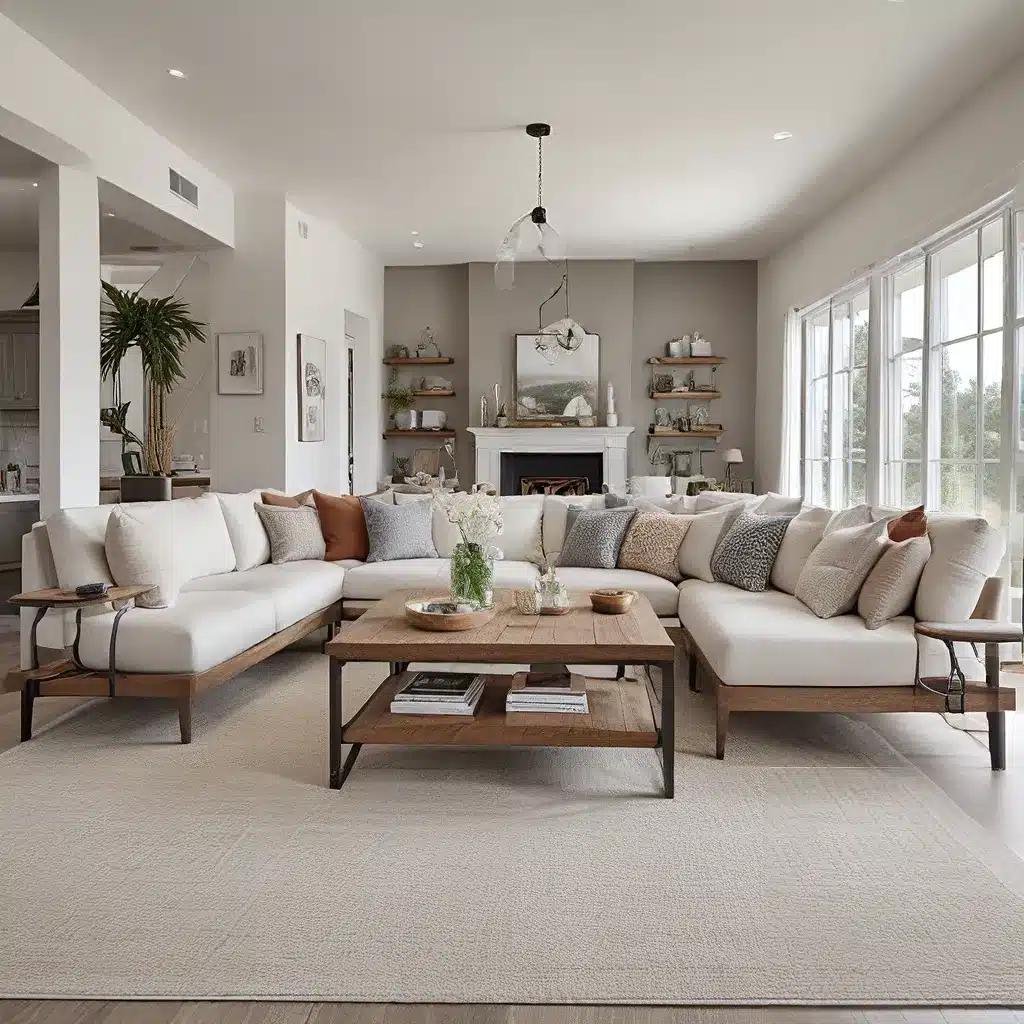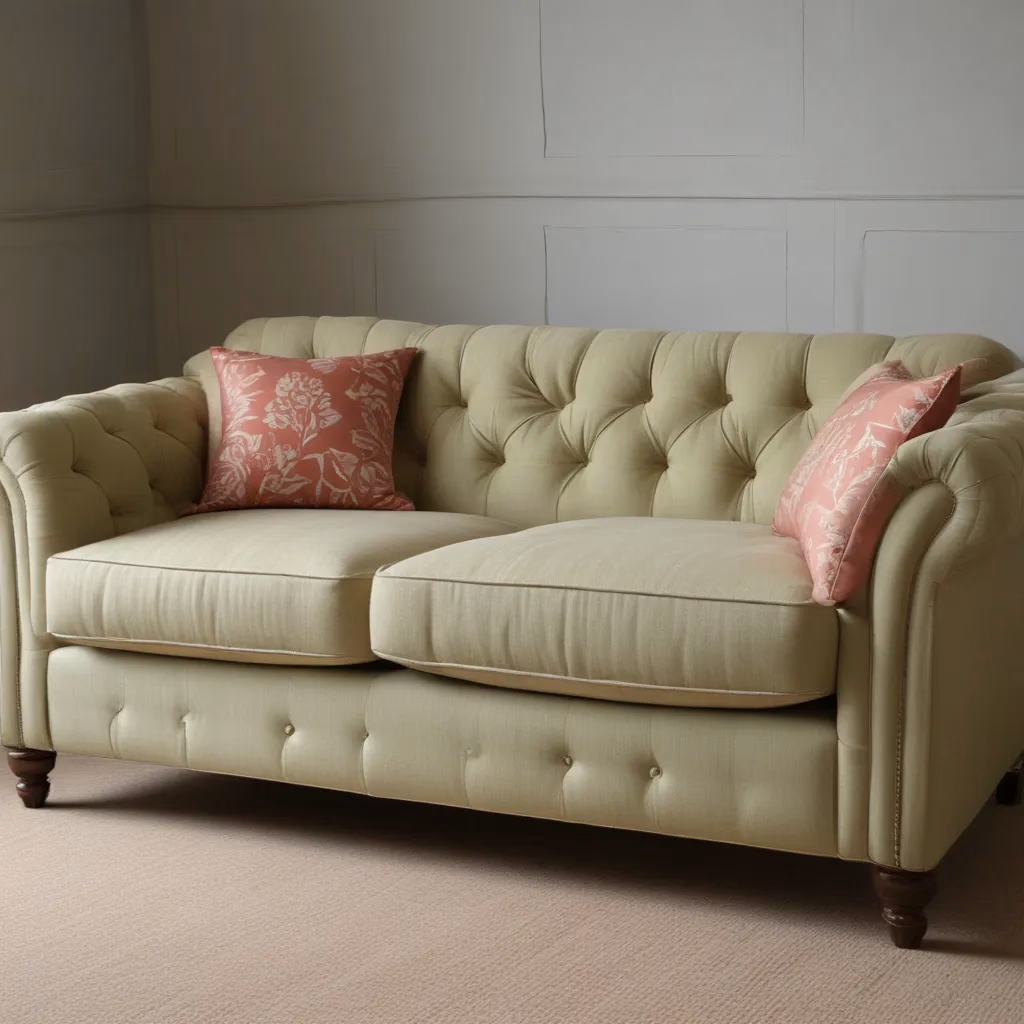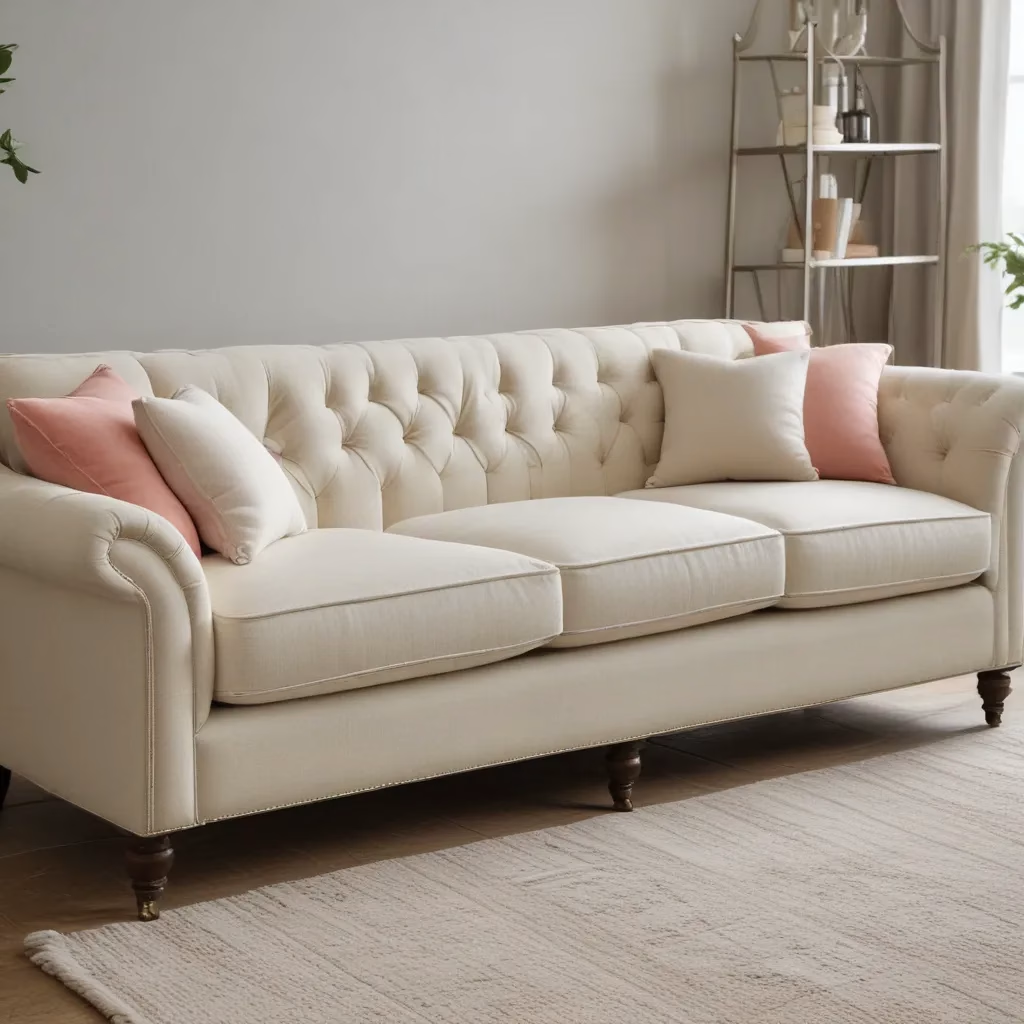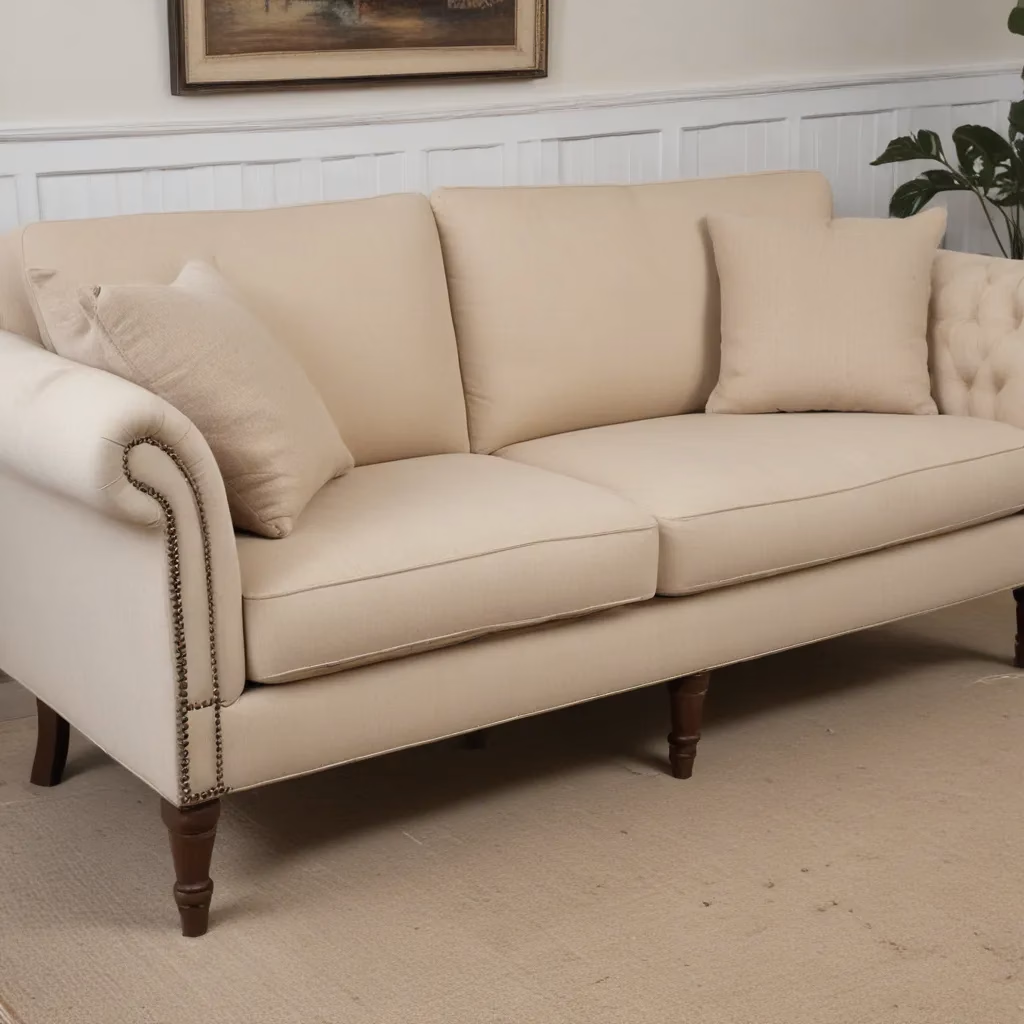
Embracing the Beauty of Open Concept Design
As someone who loves interior design, I’ve always been captivated by the allure of open concept living. There’s just something so inviting and airy about spaces that seamlessly flow from one room to the next, allowing the eye to wander and the imagination to soar. And let’s be real, who doesn’t dream of that perfect, Pinterest-worthy home where every nook and cranny oozes with style and functionality?
But let’s be honest, making the most of an open floor plan can be a real challenge. How do you create cohesion and visual interest without everything feeling like one big, bland box? And what about all that extra square footage – how do you fill it without breaking the bank or sacrificing your minimalist dreams?
Fear not, my friends, for I’m here to share my hard-won wisdom on maximizing your open concept living space. From versatile furniture to clever zoning techniques, I’ll let you in on the secrets that will have your home looking like it belongs in the pages of a magazine (minus the painful price tag, of course).
Mastering the Art of Multifunctional Furniture
Now, I know what you’re thinking – “Ugh, another article telling me to buy a million different pieces of furniture.” But hear me out, because the key to conquering open concept living isn’t about filling every nook and cranny with stuff. It’s about being strategic and choosing pieces that serve double (or even triple) duty.
Take, for example, the humble ottoman. Sure, it may seem like just a glorified footrest, but in the world of open concept design, it’s a veritable Swiss Army knife of functionality. Not only can it provide extra seating when guests come over, but it can also double as a coffee table, a storage unit, or even a makeshift side table. And the best part? It takes up virtually no visual real estate, making it the perfect choice for smaller spaces.
But the ottoman is just the tip of the iceberg. Multifunctional furniture is where it’s at, my friends. Think about a console table that can serve as a TV stand, a display surface, and a handy spot to stash your mail. Or how about a daybed that transforms from a cozy lounging area to a guest bed in the blink of an eye? The possibilities are endless, and the more you can pack into a single piece, the more you’ll be able to streamline your layout and create a cohesive, uncluttered vibe.
Zoning: The Secret to Seamless Transitions
Okay, so you’ve got the versatile furniture down, but now you’re faced with the challenge of making it all flow together. Enter the magical world of zoning, where you can create distinct areas within your open concept space without sacrificing that airy, connected feel.
One of my favorite tricks is to use area rugs to define different zones. By anchoring each “room” with its own rug, you can visually separate the living, dining, and even workspace areas without erecting any physical barriers. And the best part? You can easily swap out rugs as your needs or design preferences change, keeping things fresh and exciting.
But rugs are just the beginning. You can also use strategic furniture placement to create natural divisions. For example, placing a console table or bookcase between the living and dining areas can help delineate the two spaces without making them feel completely isolated. And don’t forget about the power of lighting – pendant lights over a dining table or floor lamps in the living room can work wonders in establishing distinct zones.
Maximizing Vertical Space: The Unsung Hero of Open Concept Design
Now, I know what you’re thinking – “But wait, doesn’t all this talk of zoning and multifunctional furniture mean I have to sacrifice storage space?” Not to worry, my friends, because the secret to maximizing your open concept living lies in the oft-overlooked realm of vertical space.
Think about it – when you’re working with an open floor plan, you’ve got all that glorious square footage to play with, but it’s easy to get caught up in the horizontal plane and neglect the vertical potential. But trust me, that’s where the true magic happens.
Enter the humble shelving unit – the unsung hero of open concept design. By incorporating tall, slender shelves into your layout, you can create designated storage areas without taking up valuable floor space. And the best part? You can use these shelves to display your favorite knick-knacks, books, or even to stash those oft-forgotten items that tend to clutter up your surfaces.
But shelves are just the beginning. Don’t be afraid to get creative with your vertical storage solutions, whether it’s a wall-mounted bookcase, a hanging plant display, or even a ladder-style shelving system that doubles as a room divider. The sky’s the limit when it comes to maximizing your vertical real estate, and the more you can utilize this often-overlooked dimension, the more streamlined and uncluttered your open concept space will feel.
Embracing the Unexpected: Infusing Personality into Open Concept Living
Okay, so you’ve got the furniture, the zoning, and the vertical storage all figured out. But let’s be real – open concept living can sometimes feel a bit, well, sterile. How do you inject a little personality and charm into a space that’s designed to be so effortlessly cohesive?
Well, my friends, that’s where the unexpected comes in. Don’t be afraid to mix and match your design elements, blending unexpected textures, colors, and patterns to create a space that’s truly one-of-a-kind. A velvet sofa paired with a sleek, modern coffee table? Yes, please. Or how about a vintage armchair nestled between minimalist bookshelves? The possibilities are endless, and the more you’re willing to embrace the unexpected, the more your open concept space will truly feel like a reflection of your personal style.
And let’s not forget the power of accessories. Throw pillows, wall art, and even gasp knickknacks can all be used to infuse your open concept living with a healthy dose of personality. Don’t be afraid to experiment and have fun – after all, this is your space, and it should feel like a true extension of your unique aesthetic.
Embracing the Evolution: Flexible Design for the Modern Homeowner
As much as we’d all love to create a Pinterest-perfect open concept oasis that never changes, the truth is, our lives and our needs are constantly evolving. And that’s precisely why it’s so important to approach your open concept design with a flexible mindset.
Think about it – the layout and furniture that worked for you as a single professional might not be quite as functional once you’ve got a growing family to consider. Or maybe that sleek, minimalist aesthetic you once adored starts to feel a bit sterile as your tastes mature over the years. The key is to embrace the ebb and flow of your open concept living, being willing to adapt and evolve as your needs and preferences shift.
That’s where modular furniture and adaptable zoning techniques come in handy. By choosing pieces that can be easily rearranged or repurposed, you’ll be able to keep your open concept space feeling fresh and functional, no matter what life throws your way. And who knows? Maybe that once-trendy coffee table will find new life as a playful side table in your kid’s bedroom, or that oversized sectional will become the coziest of family movie night hubs.
The point is, open concept living is all about flexibility – embracing the natural flow of change and using it to your advantage. So don’t be afraid to experiment, to try new things, and to let your space evolve right alongside you. After all, the true beauty of open concept design lies in its ability to adapt to your ever-changing needs and desires.
Conclusion: Unlocking the Full Potential of Your Open Concept Space
Well, there you have it, my friends – the secrets to maximizing your open concept living space. From versatile furniture to strategic zoning techniques, we’ve covered it all, and I hope you’re feeling inspired and empowered to tackle your own open concept design challenges.
Remember, the key is to approach your open concept living with a open mind and a willingness to experiment. Don’t be afraid to get creative, to try new things, and to embrace the ever-evolving nature of your space. After all, the true beauty of open concept design lies in its ability to adapt and grow alongside you and your lifestyle.
So go forth, my fellow design enthusiasts, and unlock the full potential of your open concept living. With a little bit of creativity, a dash of flexibility, and a whole lot of style, I know you’ve got this. Happy designing!



